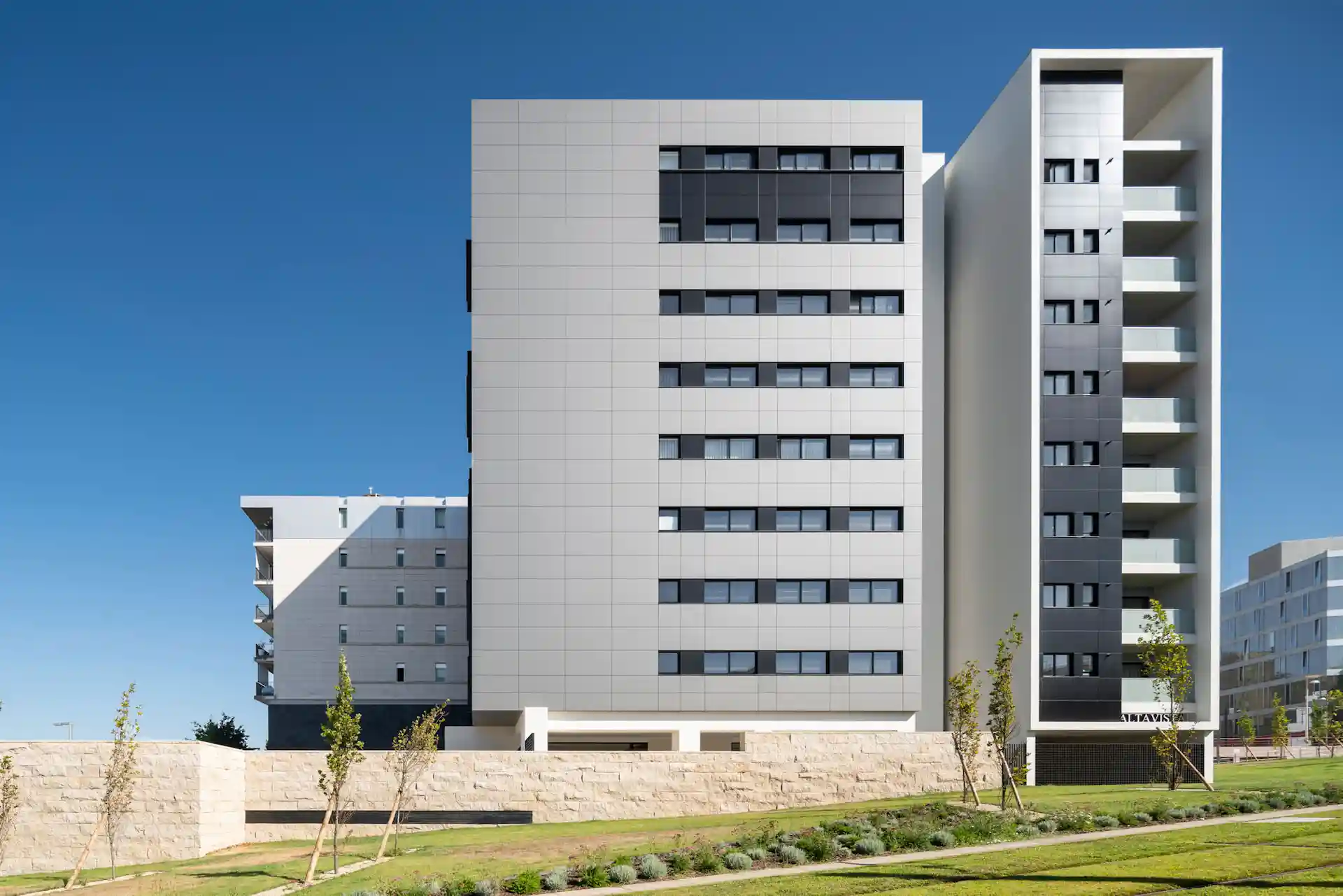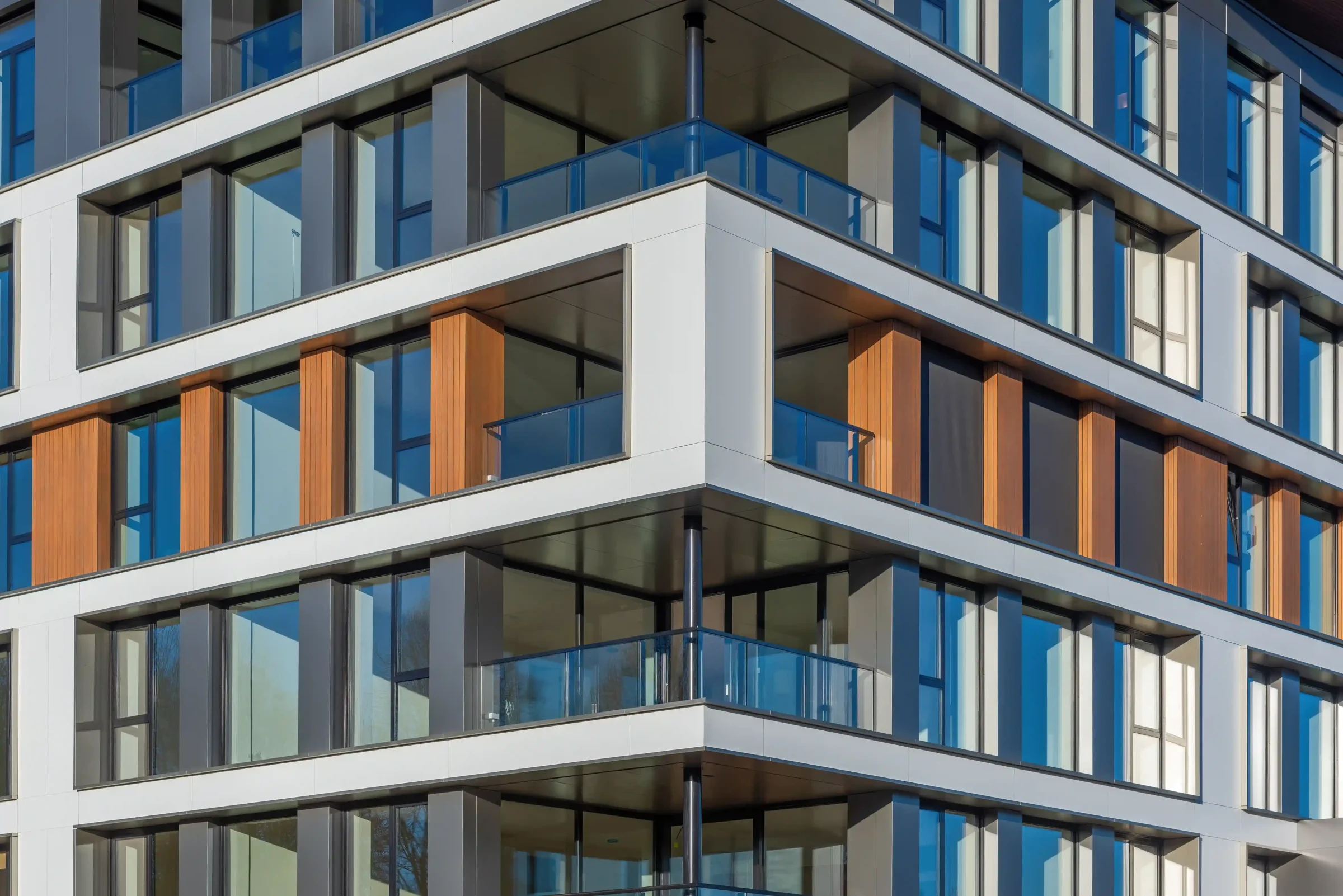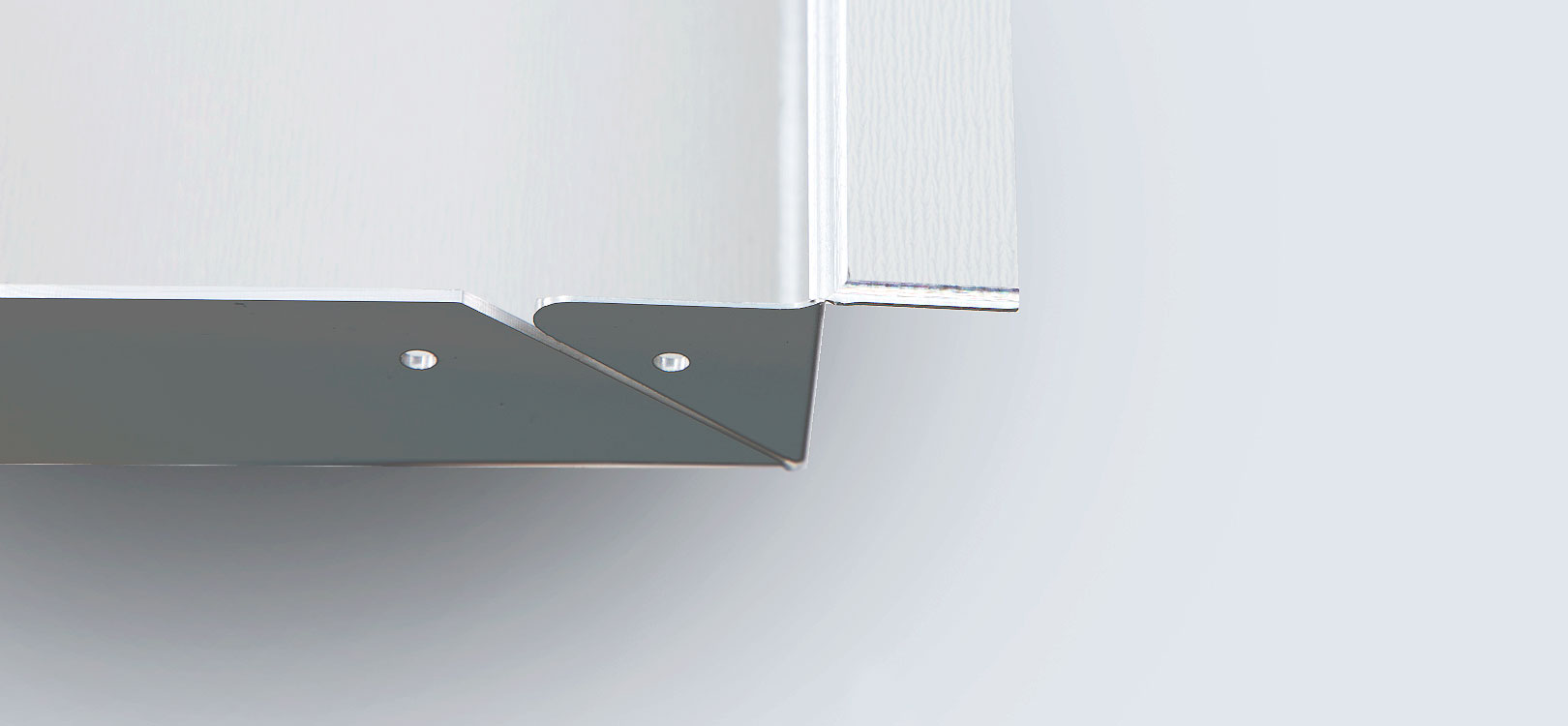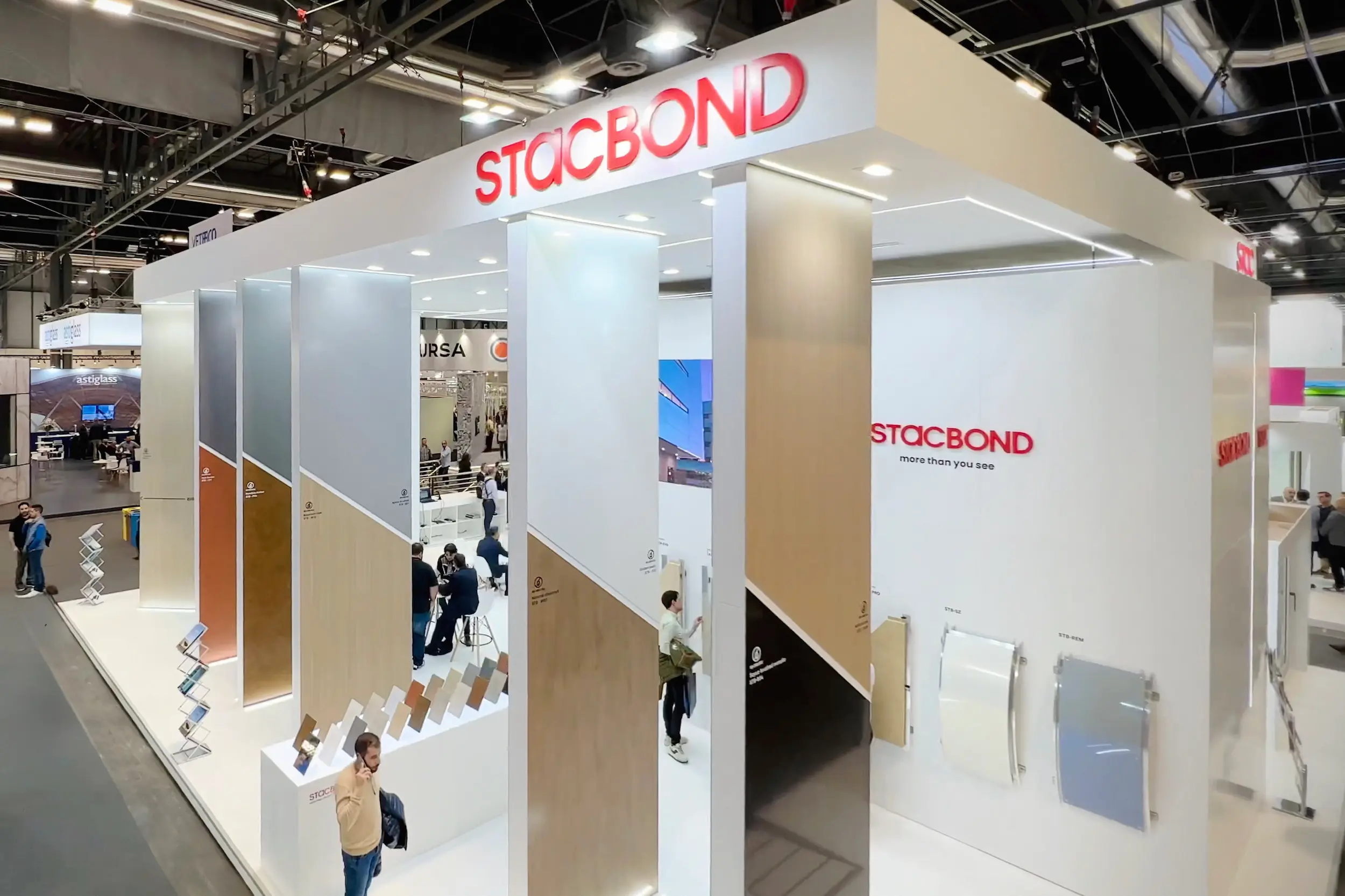What is a ventilated façade?
A ventilated façade is a construction system that adds a layer of external cladding to the building separated from the main structure by an air chamber. This separation is essential, as it creates an intermediate space that facilitates continuous ventilation throughout the façade.
How does the ventilated façade work thermally?
During the summer months, the sun warms the outer surface of the lining. However, due to the ventilated air chamber, this heat is not transferred directly to the interior of the building. The hot air that accumulates in the chamber tends to rise and exit from the top, creating a constant air flow thanks to the phenomenon known as the chimney effect. This airflow helps to extract accumulated heat, reducing the temperature inside the building and decreasing the need for air conditioning. Thus, the ventilated façade acts as a thermal barrier that prevents the entry of heat, keeping the interior cooler.
In winter, the behavior of the ventilated façade helps to preserve the interior heat. The external cold air entering the air chamber is slightly heated by the heat that escapes from the inside of the building before leaving, which helps minimize heat loss. In addition, the presence of the insulation layer in the substructure prevents heat from easily dissipating to the outside. This results in lower heating demand and a warmer and more comfortable indoor environment.
In transition seasons, such as spring and autumn, the ventilated façade provides a thermal balance by balancing-out day and night temperature variations. During the day, it prevents excessive heat from penetrating the building and at night helps to preserve the heat accumulated during the day. This stabilizes the indoor temperature and reduces dependence on mechanical air conditioning systems.
Thanks to this façade system, significant energy efficiency is achieved throughout the year, effectively adapting to different climatic conditions. The ventilated façade with STACBOND aluminium composite panels not only improves thermal comfort within the building, but also contributes to substantial energy and economic savings by reducing the burden on heating and cooling systems by approximately 30%. This savings translates into lower energy demand and a reduction in the building’s carbon footprint.

Other advantages of ventilated façades
In addition to thermal insulation, a ventilated façade has a number of other advantages:
- Sound insulation: It offers a considerable reduction in noise pollution, reducing outside noise by about 25%. This feature is especially valuable in densely populated urban environments or noisy areas.
- Low maintenance cost: Composite panel façades require minimal maintenance, are weather resistant, and are easy to clean and replace components. This not only reduces long-term costs, but also minimizes interruptions due to repairs.
- Reduced humidity: The air chamber prevents the filtration of moisture and humidity and improves the air-tightness of the building. This is crucial to prevent structural problems related to damp and mould, thus ensuring greater longevity of the building.
- Revaluation of the property: The aesthetic and functional improvements provided by ventilated façades can substantially increase the market value of a building. The modernisation of the façade improves not only the appearance but also the efficiency and comfort of the building.
- Installation and flexibility: The installation of ventilated composite panel façades is fast and efficient, using assembly systems with mechanical fixings that facilitate both initial installation and future repairs or modifications. In addition, the substructure can correct imperfections in the existing façade and is adaptable to various types of buildings.
- Concealment of pipework and ducting: This system allows an aesthetic integration of technical installations such as electrical wiring ducting and pipes, keeping these elements hidden but accessible for maintenance.

Advantages of using composite panels in ventilated façades
The exterior cladding of a ventilated façade can be of different materials. If you choose the aluminium composite panel, you will have the following additional advantages:
- Lightness: Aluminium composite panels are exceptionally lightweight, especially compared to other traditional materials such as steel or stone. This feature reduces the structural load on the building and facilitates the handling and installation of panels during construction or rehabilitation.
- Durability: Aluminium is known for its corrosion resistance and durability across a range of environmental conditions. Composite aluminium panels are designed to resist UV degradation, corrosion, and weather wear, ensuring long service life with minimal maintenance requirements.
- Adaptability: These panels can be cut, bent, drilled and shaped on the construction site with conventional tools, allowing easy adaptation to project specifications without requiring special equipment or complex techniques.
- Aesthetic versatility: STACBOND aluminium composite panels are available in a wide variety of finishes. This allows architects and designers great architectural flexibility. In addition, their surface can be treated to mimic other materials such as wood, stones and other textures.
In short, a ventilated façade is a construction system that significantly improves the energy efficiency of buildings. Its design, which includes an air chamber, allows for better thermal control by reducing heat transfer in summer and conserving heat in winter, thus reducing the need for air conditioning systems. In addition to its thermal benefits, it offers acoustic insulation, low need for maintenance, protection against damp and a revaluation of the property. The use of aluminium composite panels adds additional advantages such as lightness, durability, adaptability and aesthetic versatility, consolidating itself as an efficient and aesthetic option to improve both comfort and value of buildings.



